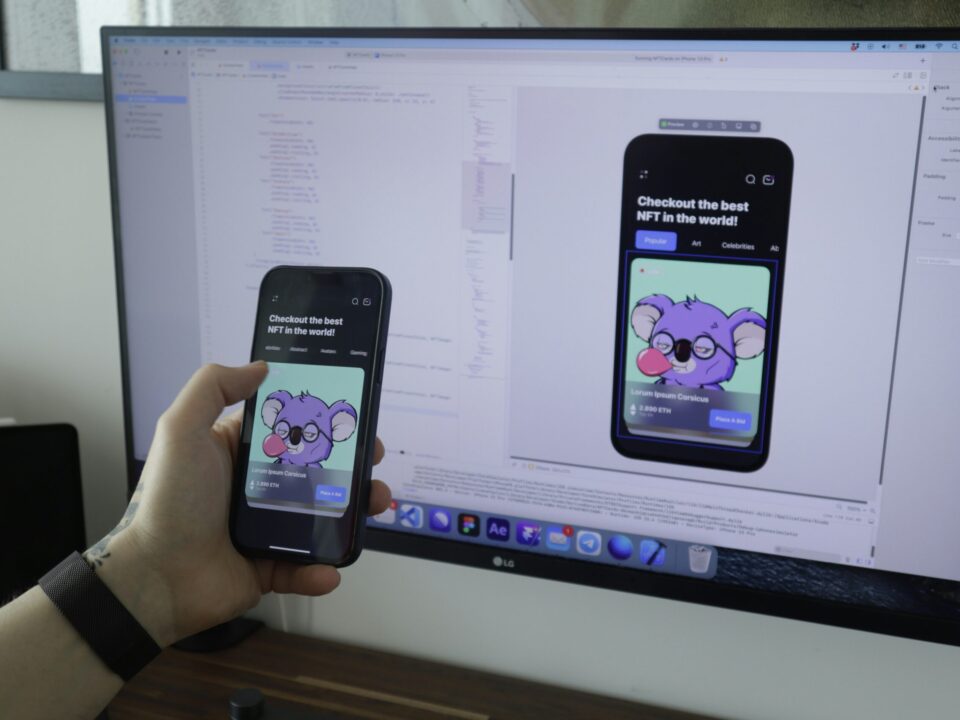
Swift networking and API integration
March 21, 2024
Top Advanced Swift Programming Techniques to Level Up Your Skills
March 24, 2024Welcome aboard the good ship “Debug” as we chart a course through the often tumultuous waters of Swift coding. Yes, we’re tackling the formidable world of Swift debugging and troubleshooting techniques. We’ve all been there, longing for that smooth, error-free code, only to be confronted by the ‘red of dread’ — those dreaded error messages. Fret not, intrepid coder! This comprehensive guide is your golden compass, pointing you in the right direction to conquer the sea of bugs and glitches in your Swift programming journey. So, grab your captain’s hat and let’s navigate these winding passages together, unraveling the enigmas of Swift debugging and shedding light on the best troubleshooting practices. Whether you are a seasoned coder or just dipping your toes in, each paragraph of this instructive voyage is a treasure trove of insights guaranteed to shape you into a successful Swift problem solver!

Swift Debugging and Troubleshooting Techniques
Table of Contents
Understanding Swift Debugging Tools
Swift debugging tools are the ship’s radar in our metaphorical journey. They help us navigate through the stormy seas of coding errors and bugs. The most common tools include Xcode, LLDB, and breakpoints, each offering its own set of benefits and features to assist you in the debugging process.
Xcode is the primary Integrated Development Environment (IDE) for Swift developers. It provides an array of debugging tools including a debugger console, a variable inspector, and a graphical interface to LLDB, which is the core debugging tool embedded in Xcode. LLDB is an open-source, next-generation, high-performance debugger that is instrumental for inspecting the state of your running application and evaluating expressions.
Breakpoints, on the other hand, are markers that you set at specific lines of code where you want execution to pause. When the application reaches a breakpoint, it halts, allowing you to inspect the current state of your program. Breakpoints are a powerful tool for isolating problematic sections of your code and getting a better understanding of your application’s flow.
Common Swift Debugging Problems
In the Swift coding world, you may encounter a variety of bugs and errors. These can range from simple syntax errors, such as missing semicolons or mismatched brackets, to more complex logical errors that can be difficult to trace and resolve.
One common issue is the infamous “unexpectedly found nil while unwrapping an Optional value”. This occurs when you attempt to force-unwrap an Optional variable that doesn’t contain a value, leading to a runtime crash. Another frequent problem is the “unrecognized selector sent to instance” error, which happens when you call a method that doesn’t exist on a particular object.
Furthermore, logical errors can also cause significant headaches. These are situations where your code runs without crashing, but doesn’t produce the expected results. This can be due to incorrect logic, misuse of APIs, or simply misunderstanding how a piece of code operates.
Effective Swift Troubleshooting Techniques
Troubleshooting is a systematic approach to identifying and fixing problems. In the context of Swift debugging, effective troubleshooting requires a good understanding of the code, a methodical approach, and the right use of debugging tools.
One effective strategy is to use “divide and conquer”. If you’re facing a complex issue, try breaking it down into smaller, more manageable parts. Focus on one piece at a time and test it independently. This can help you isolate the problem and make it easier to understand.
Another useful technique is “rubber duck debugging”. This involves explaining your code line by line to a rubber duck (or any inanimate object). The act of verbalizing your code can often help you spot errors or flaws in your logic that you may have missed while writing it.
Using Breakpoints for Swift Debugging
Breakpoints are a powerful tool in your Swift debugging arsenal. They allow you to pause the execution of your code at specific points, giving you the opportunity to inspect the state of your application at those moments.
To use breakpoints, you simply click on the number line in Xcode next to the line of code where you want to create a breakpoint. When you run your application, it will stop at this line, and you can inspect variables, step through your code, and more.
Conditional breakpoints are particularly useful. They pause execution only when certain conditions are met. This can be incredibly handy when you want to investigate a problem that only occurs in specific circumstances.
Debugging with LLDB in Swift
LLDB is a powerful debugger that’s integrated into Xcode. It allows you to inspect the state of your running application, evaluate expressions, navigate your call stack, and more.
One of the most useful LLDB commands is po (print object). This command prints the description of an object in your console, which can be extremely useful for understanding its current state. For example, you might use po to print the contents of an array or dictionary.
Another helpful command is bt (backtrace), which prints the call stack. This can help you trace the sequence of function calls that led to the current point in your code, giving you valuable context for understanding an issue.
Debugging Swift Code in Xcode
Xcode is a comprehensive tool for Swift development and debugging. It offers several features that make debugging easier, including a variable inspector, a console for LLDB commands, and a view debugger.
The variable inspector allows you to see the current state of all variables in the scope where your application is paused. This can be incredibly useful for understanding what’s happening in your code at a given moment.
The view debugger is another powerful tool in Xcode. It allows you to inspect your application’s user interface at runtime. You can see the entire view hierarchy, inspect the properties of individual views, and even modify them to see the effect on your layout.
Troubleshooting with Swift Error Handling
Swift provides robust support for error handling with the do-catch syntax. When a function throws an error, you can catch it in a catch block and handle it appropriately. This can help you identify and resolve problems in your code.
Error handling in Swift also allows you to propagate errors from a function to its caller. This means you can centralize your error handling code in one place, making your code cleaner and easier to manage.
Additionally, Swift’s assert and precondition functions can be used to enforce essential conditions in your code. If a condition isn’t met, these functions cause your application to terminate. This can be a powerful tool for catching and fixing bugs during development.
Case Study: Real-world Swift Debugging Scenarios
Let’s take a look at a few real-world scenarios where Swift debugging tools and techniques come into play. Imagine you’ve created an app that fetches data from a remote server. However, sometimes the data doesn’t load, and you’re not sure why.
You could start by setting a breakpoint in the function that loads the data. Then, using the LLDB po command, you can inspect the response from the server. If the response is nil or not what you expect, you have a clue about the issue.
In another scenario, you might have an app with a complex UI that’s not rendering correctly. Here, the Xcode view debugger could be your best friend. You can inspect the view hierarchy and the properties of each view to understand why your layout isn’t appearing as expected.
Conclusion and Additional Resources
Navigating the world of Swift debugging and troubleshooting can be a challenging journey. But with the right knowledge of debugging tools and effective troubleshooting techniques, you can conquer any sea of bugs and errors.
Remember, the key to effective debugging is a systematic, methodical approach. Be patient, be persistent, and you’ll become a master of Swift debugging in no time.
For further exploration and learning, Apple’s official Swift and Xcode documentation are invaluable resources. Online platforms like StackOverflow and GitHub can also provide a wealth of information and real-world examples of Swift debugging scenarios.





